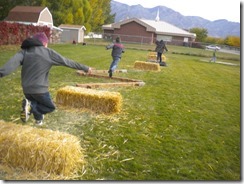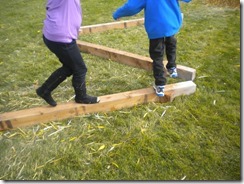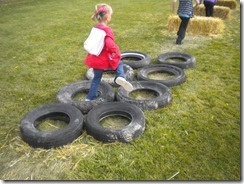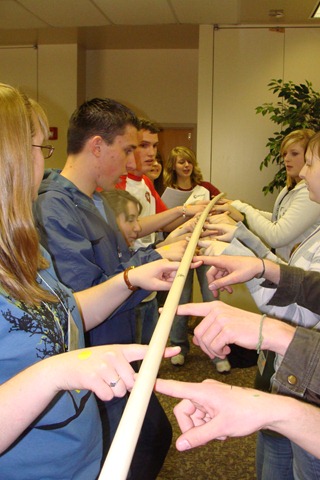I’m not writing this blog for you, I’m writing it for me. Every time I need to create an obstacle course I have to rethink every type of course we’ve done in the past. Next time I have to make an obstacle course I’m just going to search for this blog,hopefully you’ll get some good ideas too.
Kids love obstacle courses and they’re pretty easy to create just using the things you have around your house or party area.
The easiest way to create a course is to assign each person one obstacle or if it is for a family reunion, assign several families to each bring an obstacle. You can do this with little or no advance notice using just the things you have in the course area.
If you have a committee that is putting the course together spend some time brainstorming ideas for your course layout. If you will be at a campground you may be able to take advantage of a water hazard, large rocks and logs.
Eight to ten challenges is a good number for most people. Here’s some tried and true obstacles that have proved to be fun over the years.
Jumping Obstacles
Bales of straw or hay make a fun obstacle. Other jumping obstacles can be logs, laundry baskets or rolled up sleeping bags. Instead of jumping you can crawl under or over a row of chairs.
Running Obstacles
Lay a ladder on the ground and children run through the ladder making sure they step in the hole between each rung on the ladder.
Every obstacle course needs a tire challenge of some sort. When runners reach the tires, they have to run through them, placing one foot in each of the tires. The more tires you have the harder it becomes.
Swinging Obstacles
Everybody likes a good old rope swing and it’s a fun addition to any obstacle course. If you aren’t near a natural water hazard fill up a kiddy wading pool to provide an extra challenge. Several big knots tied in the rope’s end makes it easier to grab.
Balancing Obstacles
Using logs, 2x4s or wooden planks makes for a fun balancing portion of your course.
Throwing Obstacles
Throw beanbags into a bucket or basket. If you have access to a basketball hoop, require participants to make a basket before moving to the next challenge. If football is your sport of choice throw a ball through a goal post made of PVC pipe.
Silly Obstacles
Purchase some old couch cushions from the thrift store, mattress or foam pad and set out for participants to run through. This challenge will really slow runners down- just be sure to tell them there is no jumping allowed.
And don’t forget cones (good for zig zagging) and hula hoops (good substitute for tires).
A stopwatch (or the stopwatch on your cellphone) is essential for keeping track of their course times. You can keep times individually or run your obstacle course as a team relay event.
Setting up an obstacle course is a wonderful way for adults and children to get some fun physical activity. Kids will do it as part of an organized activity but when the “official” activity is over they’ll continue to play and be entertained making their own kind of fun.






![clip_image003[4] clip_image003[4]](http://familyreunionhelper.com/blog/wp-content/uploads/2012/11/clip_image0034_thumb.jpg)


![clip_image002[6] clip_image002[6]](http://familyreunionhelper.com/blog/wp-content/uploads/2012/11/clip_image0026_thumb.jpg)



